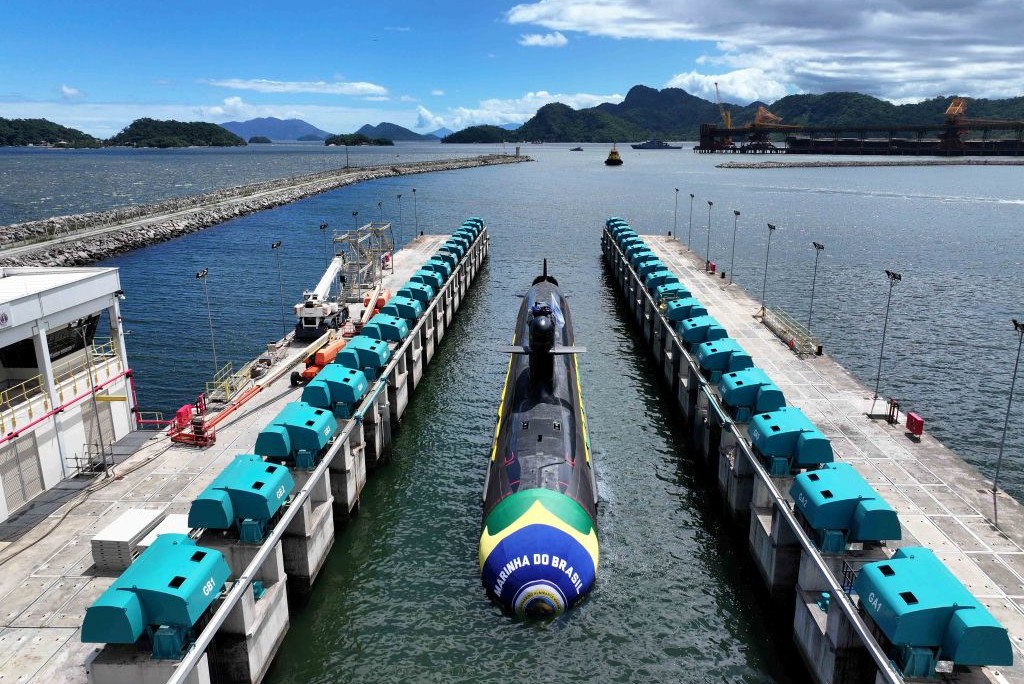The Evolving Landscape of U.S. Defense Dependency on China: A Policy Analysis
Strategic Overview
Currently, approximately 41% of U.S. military systems and defense infrastructure is reliant on Chinese semiconductors, while a staggering 91% of the U.S. Navy’s weaponry depends on critical minerals sourced from Chinese industries. As the United States shifts its strategic focus towards the Indo-Pacific region, it faces the alarming reality that its military superiority is increasingly contingent upon China—an adversary it may soon find itself in direct conflict with.
Historical Context
In the early 1990s, a pivotal transformation occurred in the global strategic framework. The dissolution of the Warsaw Pact and the collapse of the Soviet Union marked the end of a bipolar international order. The U.S. emerged as the leading global power, characterized by the largest economy and unmatched military strength, as evidenced by the swift success of Operation Desert Storm in 1991.
This period of unchallenged dominance was characterized by Francis Fukuyama’s assertion in “The End of History and the Last Man,” which posited that the rise of Western liberal democracy signaled the termination of historical ideological conflict.
The Shift in U.S. Foreign Policy
The events of September 11, 2001, dramatically reshaped U.S. military and foreign policy, catalyzing prolonged military engagements in Iraq and Afghanistan under the banner of the “War on Terror.” This prolonged focus on the Middle East resulted in neglect of emerging strategic threats, such as Russia’s resurgence and a rising China.
The Obama Administration’s Response
The Obama years (2009-2017) signaled a strategic realignment, notably labeled as the “Pacific Pivot.” President Obama emphasized the Asia-Pacific’s significance, illustrating this shift in his 2011 address to the Australian Parliament, where he articulated the need for the U.S. to play a substantial role in shaping the region’s future. This resulted in a commitment to bolster U.S. presence while balancing relations with allies—a stance that some argue persists under the Biden Administration.
However, the shift also came with challenges, as relations with traditional allies soured due to attempts to negotiate with Iran and a muted U.S. response to upheavals during the “Arab Spring.”
Vulnerabilities in U.S. Defense Supply Chains
Recent analyses reveal alarming dependencies that compromise national security. A report from Govini highlights that between 2005 and 2020, the number of Chinese suppliers in U.S. military supply chains skyrocketed from just over 10,000 to more than 40,000. This dependency has escalated significantly concerning semiconductors:
- 41% of Department of Defense (DoD) weapon systems utilize Chinese semiconductor components.
- Specific weaponry, such as the F/A-18E/F and Arleigh Burke-class destroyers, contain thousands of Chinese semiconductor units.
Furthermore, recent export restrictions from China on critical minerals underscore the urgency of addressing these vulnerabilities. Minerals such as tungsten, gallium, and germanium are crucial components in a wide range of military applications. A staggering 91% of U.S. Navy systems rely on materials affected by these restrictions.
The Rare Earth Elements Dilemma
Rare Earth Elements (REEs) present another significant area of concern. China controlled nearly 70% of global REE production and 99% of processing as of 2024. These materials are indispensable in various defense systems, including advanced fighter aircraft and naval vessels. The F-35 alone requires 408 kg of REEs, emphasizing the critical need for alternative supply sources.
Urgent Action Required
Recognizing these vulnerabilities, the U.S. Department of Defense is beginning to take radical measures.
- Domestic Production Initiatives: Efforts to establish U.S.-based semiconductor manufacturing are underway to mitigate dependence on foreign suppliers.
- Diversification of Supply Chains: The defense sector is rapidly exploring alternative sources for critical minerals and reducing reliance on imports.
- Stockpile Expansion: The military is prioritizing the replenishment of ammunition and missile inventories, addressing the strain caused by ongoing commitments abroad.
Competitive Landscape
Maintaining naval superiority has also come under scrutiny. The People’s Liberation Army Navy (PLAN) is rapidly expanding its fleet, reportedly outpacing U.S. shipbuilding capabilities. The historical precedent of U.S. naval dominance is at risk, necessitating an accelerated investment in both shipbuilding and advanced technologies.
New Military Strategies
To adapt to these challenges, the U.S. military is implementing the Agile Combat Employment (ACE) strategy, dispersing assets across various locations in the Pacific to complicate targeting for adversaries. The U.S. Marine Corps is actively transforming its operational doctrine through initiatives such as Expeditionary Advanced Base Operations (EABO), enhancing capabilities to counter maritime threats from temporary pads on island chains.
Conclusion
The current strategic environment demands urgent attention to the vulnerabilities embedded within U.S. defense supply chains. The challenges posed by Chinese dominance in semiconductors and critical minerals are dual-edged blades that threaten national security. As U.S. defense agencies strive for resilience and innovation, proactive measures must be undertaken to ensure the country’s military remains competitive and capable of operating effectively in an increasingly complex global theater. Action toward revitalizing the domestic industrial base is essential—not merely as a response to current vulnerabilities, but as a cornerstone of future strategic dominance.





